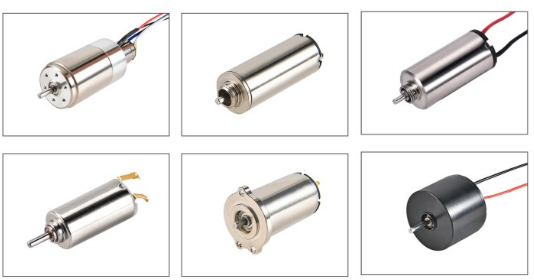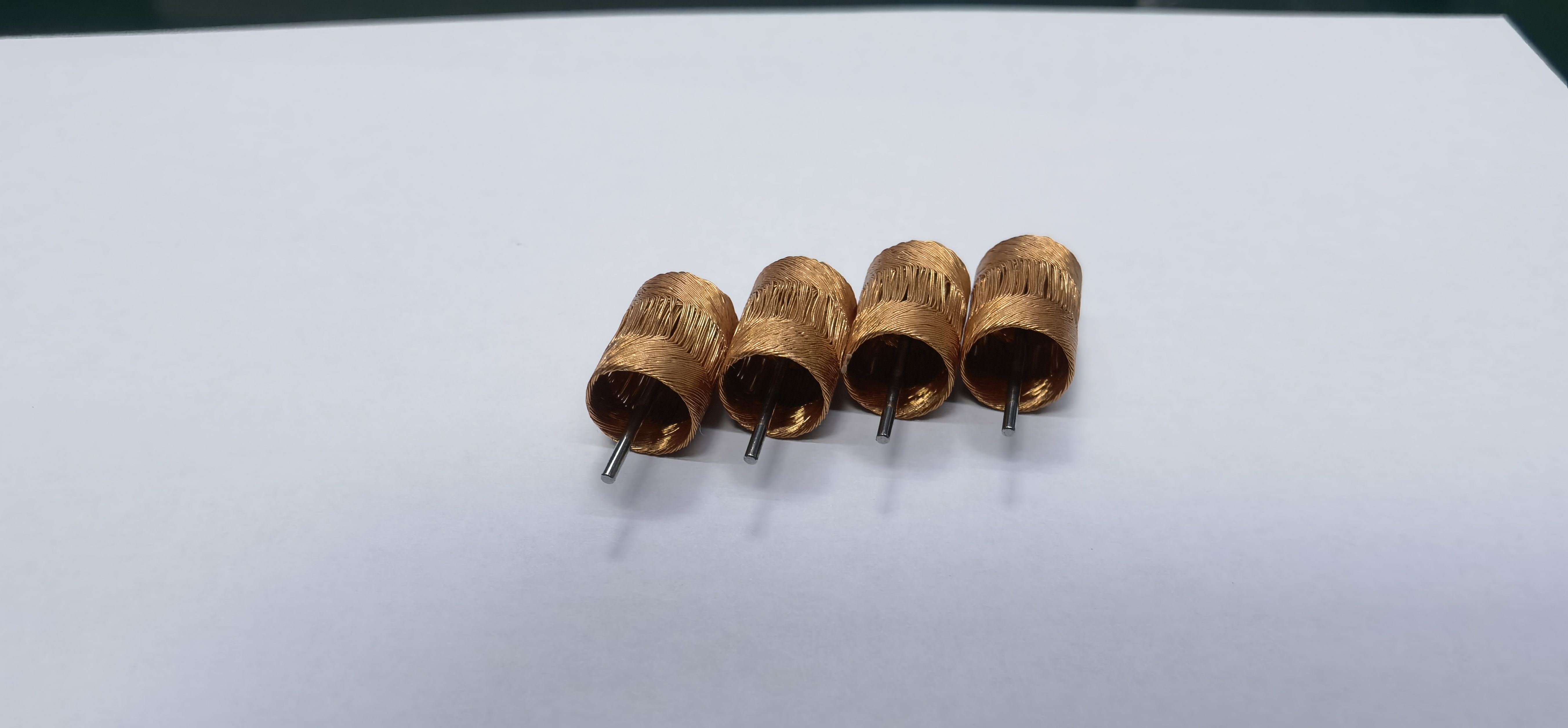Electric Motor Technology: Engineering Challenges and Innovations in Miniature Motors

Miniature electric motor technology has many hard engineering problems. Small electric motors need to get rid of heat, make less noise, and give a lot of power in small spaces. These tiny parts are very important for modern technology. They help run things like robots, medical tools, and new energy cars. New ideas in electric motor design, like micro dc motors with better cooling, now let them have more power and work more safely. Engineering teams use new materials and ways to control heat to keep small electric motors working well. Because of this, small electric motors keep changing the future of micro dc motors and electric motor technology.
Key Takeaways
Miniature electric motors have problems with heat, noise, and power in tight spaces. They need smart designs to work well and last longer.
New materials and ways to make things, like advanced magnets and 3D printing, help small motors get stronger, quieter, and use less energy.
Tiny cooling methods and thermal simulations help keep small motors cool and safe. This makes them work better and last longer.
Advanced testing and putting systems together make sure small motors work well in robots, medical devices, and electric vehicles.
In the future, smart materials, AI, and eco-friendly designs will help miniature motors get smarter, change more easily, and be better for the planet.
Key Challenges in Miniature Electric Motor Design
Designing miniature electric motors is very hard. Engineers have to fix problems with heat, noise, and power. These problems get worse as devices shrink and get stronger. Knowing why these problems happen helps us see why new ideas are needed in electric motor technology.
Heat Dissipation
Small electric motors make a lot of heat in a tiny space. The heat must leave fast, or the parts can break. Big cooling tools do not fit in small motors. This makes it hard to keep them cool.
Tests on micro dc motors show heat slows down how much power they give. When the motor spins fast, heat gets trapped inside. This makes the motor hotter and less efficient. Engineers use special shapes and microchannels to help heat escape. They also use computer models to test cooling ideas before building them.
Tip: Engineers use different thermal analysis methods when designing. Each method is faster or slower and has its own good and bad points.
Thermal Analysis Method | Accuracy Level | Computation Time | Application Stage | Trade-off Explanation |
|---|---|---|---|---|
Thermal Equivalent Circuit (1D) | Low | Quick | Early design stage | Fast checks with okay accuracy (±5°C), good for early design |
Heat Conduction Analysis | Medium-High | Moderate to High | Later design refinement | More detail and better accuracy, but takes more time |
Thermo-Fluid Analysis | High | Long | Final design and system-wide analysis | Most accurate, includes fluid effects, but slowest and used for final checks |
These choices show why engineers must pick between speed and detail. They need fast answers at first, but more detail later. Small electric motors need careful plans to stay cool and safe.
Noise Reduction
Noise is a big problem for small electric motors. When motors run, moving parts and electric signals make noise. In micro dc motors, even small shakes can sound loud for their size. This noise can bother people or mess up equipment.
Tests show noise in small motors does not always act the same. The noise can change and hurt how the motor works. Engineers try to make motors quieter. They use better materials, tighter parts, and special shapes. Sometimes, they add dampers or shields to block sound. Quiet motors are important for medical tools and robots.
Power Density
High power density means the motor gives lots of power for its size. Small electric motors must fit in tight spots but still work well. This is why engineers have so many problems with small motors.
Tests on micro dc motors show smaller motors often lose efficiency. Heat builds up faster, and noise gets worse. The parts must handle more stress. Engineers must find ways to put more power in a small space without overheating or breaking.
Why do these problems matter? Devices like robots, medical tools, and new energy cars need small, strong, and quiet motors. Fixing these problems helps engineers make better products. They must use ideas from many fields, like materials science, fluid dynamics, and electronics, to build the next generation of electric motor technology.
Material and Manufacturing Innovations

Advanced Magnetic Materials
Why do engineers use advanced magnetic materials in small electric motors? These materials help motors work better and save energy. With advanced materials, motors can jump higher and last longer. One study showed a tiny magnetic soft robot with a new design jumped much higher than old ones. The robot jumped 1.4 mm, but the old one could not jump at all. This proves that smart design and new materials make small motors work better. Engineers also use data to match material properties to what is needed. They look at things like Young’s modulus and magnetic remanence. This makes motors more efficient and reliable.
3D Printing and New Manufacturing Methods
Why are new ways of making small electric motors important? 3D printing lets engineers build shapes that were not possible before. This helps make motors smaller and stronger. Closed-loop control systems in 3D printers help make parts more exact and faster. Printers can fix themselves during printing. This means parts are made better and quicker. The table below shows how these new ways help:
Aspect | Benefit for Small Motors |
|---|---|
Precision Improvements | High-precision stepper motors allow for tighter designs |
Production Speed | Faster printing supports rapid prototyping |
Technological Advances | Better thermal management and quieter operation |
Market Trends | Demand for compact, high-torque motors increases |
These new ways of making things help build axial flux motors, radial flux motors, and brushless motors. Engineers can now make small motors that work better and use less energy.
Bioinspired Design Approaches
Why do engineers copy ideas from nature? Bioinspired design helps them solve problems in small electric motors. Scientists found that copying animal movement makes motors work better. For example, some robots use animal joint designs to get more power. Piezoelectric actuators, like insect wings, help small robots walk and fly. Changing the grain size and shape of materials, like in bones or shells, makes actuators last longer. These ideas help small motors use less energy and work better. Engineers keep trying new designs to find the best ways to improve motors.
Thermal Management in Electric Motor Technology

Micro-Scale Cooling Solutions
Engineers use micro-scale cooling to help small motors. Small motors can get too hot, especially in powerful devices. Micro-scale cooling takes away heat fast and fits in small places. Microchannels and phase separation cooling help motors stay cool when working hard.
Tests show phase separation cooling moves heat much faster. It can make the heat transfer coefficient up to 2.5 times higher than single-phase flow. This means heat leaves the motor more quickly. In one test, a triethylamine/water system in microchannels helped heat leave faster and made pressure drops lower. Integrated thermoelectric coolers (i-TEC) also help cool motors. They can lower the heat source temperature by about 20 °C and reach a coefficient of performance up to 3.26. In real tests, i-TEC made smartphones cooler by almost 16 °C during heavy use.
Micro-scale Cooling Solution | Heat Dissipation Capability | Performance Improvement | Notes |
|---|---|---|---|
Microchannel Heat Sinks | Up to 10^3 W/cm² | Up to 2x better than conventional channels | Example: 790 W/cm² with water coolant |
Phase Separation Cooling | Heat transfer coefficient up to 2.5x higher | Lower pressure drop | Based on TEA/water system |
Integrated Thermoelectric Coolers (i-TEC) | Heat source temperature reduced by ~20 °C; COP up to 3.26 | Better than standard TECs | Shown in smartphone cooling |
These cooling methods help small motors run longer and safer. They work well even in very tight spaces.
Thermal Simulation Tools
Engineers use thermal simulation tools to see how heat moves in motors. These tools help them find problems before building the motor. Simulations save time and money. Engineers can try many designs fast and pick the best one for cooling.
New hybrid simulation models are more accurate than old ones. For example, the error for winding temperature dropped from 8.8% to 1.47%. The drive end bearing error also went down from about 6.6% to 3.3%. This means engineers can trust the results more and make better choices.
Motor Component | Old Model Error (%) | New Model Error (%) | Improvement (%) |
|---|---|---|---|
Winding Temperature | 8.8 | 1.47 | 7.33 |
Drive End Bearing | 6.6 | 3.3 | 3.3 |
Engineers also test real motors to check their models. They measure how fast heat moves and compare it to the simulation. This helps make sure the models are right. When engineers use these tools, they can design small motors that stay cool and last longer.
Simulation, Testing, and Integration
Advanced Simulation for Optimization
Engineers use advanced simulation to help design miniature motors. Simulation lets them see how a motor will work before building it. This saves both time and money. They can test many modular designs on a computer. Engineers change the shape, size, or material in the model. They watch how these changes affect heat, noise, and power. Modular simulation tools let teams try out many ideas fast. This helps them pick the best design for each job. Simulation also checks if all parts work well together. This is important for robots and vehicles. It makes sure every part fits and works right.
Precision Testing Methods
Engineers need special tests to check miniature motors. These motors must work well in things like medical devices and robots. Engineers use many steps to make sure motors are reliable:
Reliability Demonstration Testing (RDT) sets clear goals. For example, a B10 life of 10,000 hours at 95% confidence.
Engineers pick statistical models for careful analysis. They use parametric and non-parametric binomial models.
Accelerated life testing uses more torque to speed up testing.
Weibull distribution helps find the right sample size and test time. It allows zero-failure demonstration.
In one test, 10 miniature DC gearmotors ran under high stress for 1,081 hours. None failed, so the B10 life target was met.
The inverse power law model finds acceleration factors. This cuts down test time but keeps results accurate.
Engineers check voltage, current, speed, and temperature every day. This helps them spot problems early.
Precision testing makes sure motors work in real life. This is very important when failure is not allowed.
New research uses theory and fast tests together. Engineers use Markov chain modeling, FMEA, and structural tests with fake loads. These methods were first used for bigger systems. Now they help check small motors for precision and reliability.
System Integration in Robotics and Vehicles
System integration is important for miniature motors. Engineers must make sure each modular motor fits into bigger systems. These systems include robots and electric vehicles. Modular design lets engineers swap or upgrade parts easily. This helps solve problems faster and supports many uses. System integration checks if motors work with sensors, controllers, and other parts. In robots, motors must move arms or wheels smoothly. In vehicles, brushless motors must give power without getting too hot. Modular integration makes repairs and upgrades easier. This saves time and money. Engineers focus on precision at every step. This keeps everything safe and reliable in real-world use.
Future Trends in Miniature Electric Motor Technology
Smart Materials and Adaptive Motors
Smart materials and adaptive motors are important for the future. These materials let motors change shape and react to heat. They also help motors use less energy. Shape-memory alloys and piezoelectric materials make motors smaller and lighter. They also make motors quieter and more efficient. These materials allow new modular designs. Shape-memory alloys can move like muscles. This means one adaptive part can do the job of many motors. Vehicles and robots become lighter and simpler.
Smart materials let motors handle many different jobs.
Motors can change quickly to be more precise.
Experts think these materials will replace old parts in cars and planes. This will make them work better and last longer.
Statistic / Insight | Details |
|---|---|
Market share of actuators & motors in smart materials market | 41.3% |
CAGR forecast (2025-2032) | 8.3% growth rate |
Key advantages | Compact size, lower power use, longer life, silent operation |
Smart materials help make new ideas that boost how well motors work.
IoT and AI Integration
IoT and AI are changing how miniature motors work. These tools let motors gather data and learn from it. Motors can make smart choices on their own. IoT sensors watch motor health and send warnings if there is a problem. AI models like TinyML can find issues early. This helps with fixing motors before they break.
Modular motors with IoT can join networks and share info.
AI lets motors change speed and power to save energy.
Real-time checks help engineers fix problems before motors fail.
Application Focus | Result |
|---|---|
Motor fault detection with AI | 98% accuracy in industry tests |
Latency | 300 ms from data to alert |
Energy efficiency | High, due to edge computing |
IoT and AI give motors better control and make them smarter.
Sustainability and Eco-Friendly Solutions
Eco-friendly solutions are important for small motors. Electric motors make less pollution and noise than engines. This helps keep cities cleaner and quieter. Studies show electric vehicles with small motors help the environment after a short time. Over years, these motors save energy and cut down on bad emissions.
Some motors, like synchronous reluctance motors, use less rare earth material. They also use less energy over time. This is better for the planet. Engineers now design motors that use fewer resources and last longer. They also try to recycle parts and pick safer materials.
Note: Picking eco-friendly motors helps follow new rules and supports recycling.
Green solutions help motors work better and protect nature. This is why the future of small motors will be green, modular, and precise.
New materials, better designs, and computer models help engineers fix heat, noise, and power problems in small motors. These new ideas make robots, cars, and medical tools work better and use less energy.
Companies spend money to make motors smarter and save energy.
Smart sensors and IoT help motors last longer and work well.
More electric cars and machines mean more research is needed.
Why are these changes important? They help companies save energy, spend less money, and make smarter, greener things.
FAQ
Why do engineers focus on heat management in miniature motors?
Engineers care about heat because too much can hurt small motors. Heat makes motors less efficient and can break them faster. Good cooling lets motors last longer and work better.
Why do miniature motors need advanced materials?
Advanced materials make small motors stronger and more efficient. These materials help motors give more power in tight spaces. They also help cut down on noise and wasted energy.
Why is noise reduction important in medical and robotic devices?
Noise reduction is important because loud motors can bother patients. Loud sounds can also mess up sensitive machines. Quiet motors help tools and robots work safely in hospitals and labs.
Why do engineers use simulation tools before building motors?
Simulation tools let engineers test ideas on computers first. They can spot problems early and save time. This helps them design better motors without wasting parts.
Why are eco-friendly solutions important for electric motor technology?
Eco-friendly solutions help keep the planet safe. They lower pollution and save energy. Using green designs makes motors safer for people and nature.
See Also
Top Ten Creative Uses Of Mini Motors In Electronics
The Role Of Mini Motors In Portable Device Innovation
A Comprehensive Overview Of Mini Motors And Their Uses
Get Custom Micro DC Motors from
INEED Motors!
Leading Brand in Vibration Motor Manufacturing Industry
